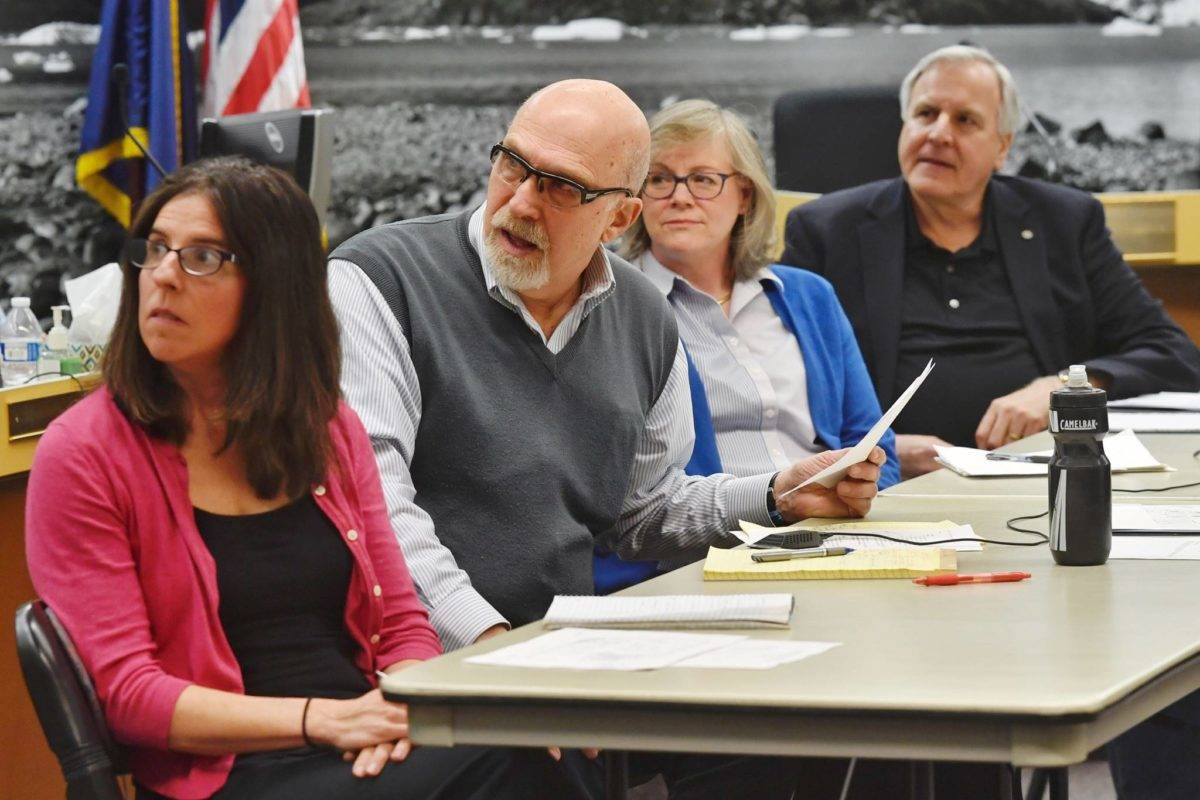If a 60-year-old city-owned building, on city land, that was used by over 40,000 Juneauites last year, was in bad shape and needed to be replaced, and
if a group of citizens raised $5.6 million towards the $26.4 million cost of replacing it, and had large private donors interested in making up most of the rest, and
if the construction project was ready to proceed and would provide vitally-needed construction jobs in Juneau at a time when construction jobs are in short supply, and
if the building brought in lots of visitors from outside of Juneau — like Alaska Folk Festival, Celebration, etc. — attracted conventions, and provided local citizens with a place for their business meetings, organizational events, weddings, retirements, and celebrations of all sorts, and
if the building was planned to work hand-in-glove with Centennial Hall, and was managed by the same folks that the city hired to jointly manage Centennial Hall in 2018, and
if the business plan for the new building was analyzed intensely by McDowell, who concluded that by the third year of operation the new building would be in the black and would generate positive revenue indefinitely into the future, and
if the building was uniquely designed to take advantage of the growing flood of summertime visitors to Juneau — 1.3 million in 2019 growing to 1.5 million by 2021 — and
if the final bill for the city would be around 30% of the cost of the building — so that about 70% would come from private and other non-CBJ sources, and
if over 2100 Juneauites signed a Statement of Support urging Assembly support for the building, and
if over 500 Juneauites donated over $2.6 million towards the building fund for the new building, …
What do you think: Should the CBJ help now with this project???
I think the answer is “Yes.” I’ll admit bias — I’ve worked on the Capital Campaign Committee for the New JACC since 2014. But in that time I’ve seen the strong need to replace the aging JACC — the former Armory — to provide the meeting, convention, and performance spaces so badly needed in Juneau. I’ve seen Juneau lose out on conventions and large visitor gatherings because the needed space — not only large rooms but “breakout” rooms for conventions — is just not available in Juneau now.
No doubt, these are challenging economic times. But Juneau is a vibrant, proactive and can-do community. Its response to these challenges should be to fight back with a project that will provide major construction jobs in the short run and create a strong economic engine to make Juneau a more attractive place in the long run. And to do so through a project that replaces a public building on public land mainly through the use of private dollars.
The CBJ got this project off to a good start in 2012 with $1 million and use of the land involved, but this public-private partnership needs a greater share of public help.
Opponents, who should favor growth, will say this isn’t the time to invest in Juneau, but this is precisely the time to show faith in our community and to buck up the local economy. They will say other projects are more deserving, but they fail to note this is the only one that is mainly funded by private investment, bringing money into Juneau at a time when funding is precious. They have even claimed that this project “will JACC up taxes,” when in fact it can be funded out of existing revenues.
Here’s a prediction: In five years, when the New JACC and a renovated Centennial Hall are providing high-quality performance venues for both local and national performers, attracting more and larger conventions to Juneau, providing the spaces for weddings, retirement parties, other celebrations, and the 101 uses those structures are currently put to (looking at you, Boy Scouts and RollerGirls), becoming Juneau’s public square and its living room, we will be hard-pressed to find any opponents of the New JACC. That’s because they will all be too busy using it, enjoying it, and wondering why we didn’t get it built years ago.
• Walter (Bud) Carpeneti lives in Juneau. He retired in 2013 after 32 years as a judge, including 15 years on the Alaska Supreme Court and three years as chief justice. These views are his own.

